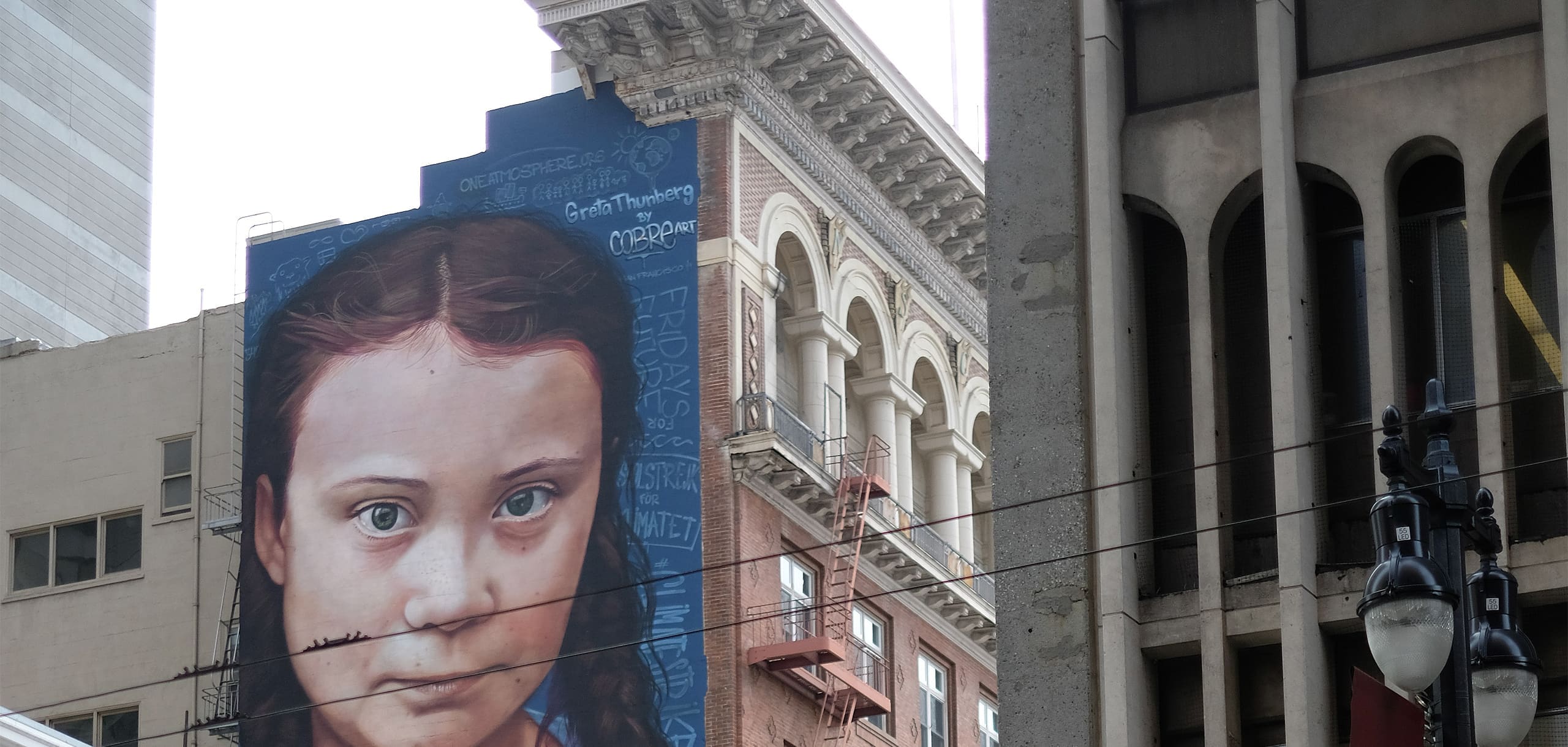M
Much in the world today cries out for change—a plundered creation, systems of violence and exploitation, and a common life fractured and frayed. The status quo is rarely something to be celebrated; it’s something to be changed. But how does change happen? What are the conditions and catalysts of social and cultural change? And what is the general direction of travel? Does change bubble up from the grassroots or trickle down from the top? Does it begin in the centre or come from the margins? Or is it that all the above are true at different times? These are thorny questions for anyone feeling a holy discontent with the status quo.
What follows is an overview of four leading theories of social and cultural change that contain some answers to these questions. This is not an exhaustive list, but the four leading theorists I’ve chosen represent four ways in which change might happen. Together they create a nuanced and fulsome picture—a map of sorts that will benefit the “rebels” crossing the stale plains of the status quo in their quest for social and cultural flourishing. And whether it’s top down, bottom up, inside out, or outside in, how change happens should be of concern to a mission-minded people, commissioned not only to share the good news but also to make and shape life-giving culture.
James Davison Hunter: Top-Down Cultural Change
Despite being published over twenty years ago, one of the most influential theories of cultural change still on offer is found in sociologist James Davison Hunter’s book To Change the World: The Irony, Tragedy, and Possibility of Christianity in the Late Modern World. Hunter’s key proposal is that cultural change is generally a slow, top-down, multi-generational process, which starts with densely networked and well-resourced elites working close to the centre of gatekeeping institutions and centres of cultural production.
While all individuals have varying degrees of agency and power, institutions—at least historically—have more. The market, the state, social and traditional media, scientific research, the family, and universities and schools, just to name a few, are never mere containers of ideas and values, but agents in their own right: they “act back” on individuals. They have formative power over the imaginations, sensibilities, and habits of people.
Does change bubble up from the grassroots or trickle down from the top? Does it begin in the centre or come from the margins?
Hunter is keen to stress that both heroic individual efforts for change and the concerted efforts of movements dissipate in the long run unless they are backed by and subsequently embedded within institutions. Institutional norms and structures give durability to the new ideas and forms of life carried by the waves of change.
A distinctive feature of Hunter’s proposal is his argument that the most consequential changes are at the level of imagination, common language, and perception—what he calls the “mythic fabric” of society. The words, values, and practices that end up being taken for granted and treated as common sense by a community (think equality, fairness, and authenticity in the West today) constitute the deepest level of change. This points to the creative arts and entertainment industries as particularly potent institutions in shaping sensibilities, inculcating values, and normalizing behaviours and lifestyle. President Joe Biden, for example, credits his change of heart on gay marriage to the TV show Will & Grace.
Time and again for Hunter, generous patronage is the starting point for significant change. Patrons and patronage institutions have historically funded the intellectuals and educators who theorize and disseminate conceptual resources for an alternative culture. Patronage also quietly sits behind the crucial function of artists, poets, and musicians, also organized in dense and intensely active networks, who symbolize, narrate, incarnate, and popularize an alternative vision of culture. But if it is to be effective and sustainable over time, this cycle of cultural production calls for institutional embedding. Ultimately, for Hunter, change that lasts will start at the top with elites, but still requires a vibrant cultural economy.
Leslie Crutchfield: Markers of Effective Activism
If Hunter’s account of cultural change is distinctly top down, Leslie Crutchfield focuses primarily on the dynamics of effective activism. Hunter’s emphasis on the power of networks and collaboration remains, but Crutchfield is more concerned with how to “turn grassroots to gold.” Successful social movements, she argues, are fuelled by a symbiotic relationship between elites and ordinary people. Energy is found at the grassroots, but leaders must help it rise.
Greta Thunberg’s role in environmental politics illustrates this well. An emblem of environmental consciousness and a moral leader in her own right, the young Swedish activist would seem on first blush to contradict the top-down, “elitist” accounts of change. Thunberg was, after all, catapulted to fame from a position of obscurity and emerged unexpectedly as a leader from “the margins.” But on closer inspection, a more complex picture emerges. Far from being detached from elites, Thunberg was amplifying messages from prominent organizations, most notably the Intergovernmental Panel on Climate Change (IPCC), which was urging climate action on governments and business. So she was incorporated into elite events like the World Economic Forum and delivered messages from the pro-environmental sections of global elites to laggard constituencies. She wound up less a lone rebel and more an effective advocate of established climate science—with her lobbying efforts boosting those of the pro-environmental experts.
Both heroic individual efforts for change and the concerted efforts of movements dissipate in the long run unless they are backed by and subsequently embedded within institutions.
Thunberg’s example illustrates that leadership, though an overused term, remains critical to catalyzing change from the bottom. Crutchfield just breathes new life into it. She shows how successful movements are neither leaderless, anarchic, nor completely spontaneous, but nor are they leader-led in rigidly hierarchical structures. Rather, they are “leaderful,” where leaders are dotted and networked throughout, setting direction as well as sharing power, inspiring from the front but also running alongside and energizing or coaxing from behind. In short, effective leaders put others and the mission they are pursuing ahead of their personal agendas. They empower rather than hoard power, facilitate rather than manipulate.
This approach to leadership will often involve navigating the complex relationship between “adversarial allies,” those groups or networks pursuing a common agenda who wind up succumbing to a scarcity mindset—refusing to pool resources and quarrelling over whose vision for change should dominate. For Crutchfield, the difference in winning movements—however non-linear and arduous the path—depends on patient leaders who put their egos and organizational distinctives to the side so that disparate factions can coalesce around a common agenda.

Duncan Green: A Power and Systems Approach
This last insight lies at the heart of the London School of Economics development economist Duncan Green’s theory of change. Like Crutchfield, Green focuses on the markers of effective activism but engages more explicitly with the influence of three important categories: the workings of complex systems, the ubiquity and variety of power, and the salience of norms.
Green’s emphasis on the need to develop system thinking is to caution against linear, simplistic accounts of change and how to achieve it. Change, he shows, is generally a slow, unpredictable process, even if occasionally punctuated by sudden, unforeseeable jumps during what Daron Acemoglu and James Robinson call “critical junctures” of uncommon opportunity. Green urges those seeking change to take a “power and systems approach.” This involves acknowledging that they are working on “live wires” at the intersection of often-unseen forces, multiple feedback loops, and variables. For this reason, working for change also involves learning to grow comfortable with experimentation, iteration, and “failing well.”
Green encourages activists to shift from seeing themselves as architects or engineers of change to seeing themselves as “ecosystem gardeners.” Working for change is not about controlling and commandeering but about observation and creativity—a humble, skilled, and agile act of improvisation on “givens.”
Power audits are essential when working for social and cultural change because they help determine what will be the most effective strategy to employ.
One such given is power. Power, Green shows, is pervasive and plural. There is, strictly speaking, no such thing as a “power vacuum.” Green encourages those seeking change to understand the different forms of power (e.g., hidden versus visible, soft versus hard, coercive power versus the power of collaboration and collective action) as well as the way power is distributed in the setting where change is sought. Power audits are essential when working for social and cultural change because they help determine what will be the most effective strategy to employ.
Norms—social, legal, or cultural—are important for activists to understand. As complex systems in themselves, norms change organically over time in a non-linear fashion. Consider the feminist movement. What were the drivers of changing the cultural perception and legal rights of women in the West? The right to vote? Employment outside the home? The invention of the washing machine or the contraceptive pill? Girls’ education? It was a combination of all of the above: activism found a way to layer within the more official campaigns and sweeping technological change.
Ronald Inglehart: Material Conditions Matter
For the late political scientist Ronald Inglehart, best known as the director of the World Values Survey, material conditions and factors weigh heavily in determining change. Inglehart gives priority to material conditions over other factors (cultural or otherwise) in explaining broad shifts in values. Based on the ample data from the World Values Survey and the European Values Study, collected from 1981 to 2014 in more than one hundred countries, Inglehart’s thesis is that as material conditions improve and survival is no longer under threat, people shift from “materialist” values about physical and economic security to “post-materialist” values, such as concern for the environment, gender and racial equality, and freedom of speech. In his view this is one element in a broader shift from “survival values” to “self-expression values,” which continues to transform our assumptions about politics, religion, gender relations, and the relationship between in-groups and out-groups, as well as the fate of institutions.
Material scarcity or abundance and high or low levels of existential security have priority for Inglehart in explaining how people’s values and ideological preferences change. For example, Inglehart attributes growing acceptance of same-sex marriage and gender equality to a marked decline in the rates of violence and growing economic prosperity. In the same vein, he interprets the rise of xenophobic authoritarianism as a backlash and response to widening inequality.
But it would be wrong to see Inglehart as a determinist. Material conditions and structural forces matter, perhaps more than some activists and change-seekers would like, but they are ultimately open to change or pushback. They leave room for individual and collective agency and action. One of economist Thomas Piketty’s key theses is, in fact, that inequality is not an economic inevitability but a political choice.
Take Brexit. The strategy and messaging of the Leave and Remain campaigns played an important role in determining the direction of the vote. The Leave campaign managed to appeal beyond mere economic interest to the level of emotion and imagination. It was a successful move. However, it would be a mistake to elevate these tactics above the objective economic and political conditions in which many Leave voters lived. For example, many reported the sense that they had been “left behind” by Westminster and held the short straw of globalization. Regional inequalities between the northern and southern regions of England bear this out. Simply put, Brexit, as a primarily political change, cannot be explained simply in terms of the political marketing savviness of the Leave campaign and relative naïveté of the Remain camp. Bigger material forces were at play.
Inglehart’s work gives us not so much a theory of social and cultural change as an important corrective to accounts of change that overplay individual or collective agency while downplaying material conditions or other forces acting at a systems level.
So Who’s Right?
None of the four theories can be boiled down to a formula. Change just doesn’t work that way. We must instead understand these rubrics as complementary pathways that are almost always likely to be mixed and matched depending on the need and historical context. Culture change is complex, usually travelling a slow, circuitous journey with variables that transcend human control and prediction. The one thing we know is that change-seekers today and always need tenacity, agility, and patience to persevere when the trajectories they crave tarry in appearing. This may be especially true of redemptive change-seeking oriented to the flourishing of “the least, the last, and the lost.” Put simply, the posture to adopt is one of sustained, even sacrificial cultivation—a nurturing of the mustard seed mentioned in Matthew 13, until it grows into a sprawling tree where, after generations, the birds of the air, those frailest of creatures, can perch happily in its branches.








